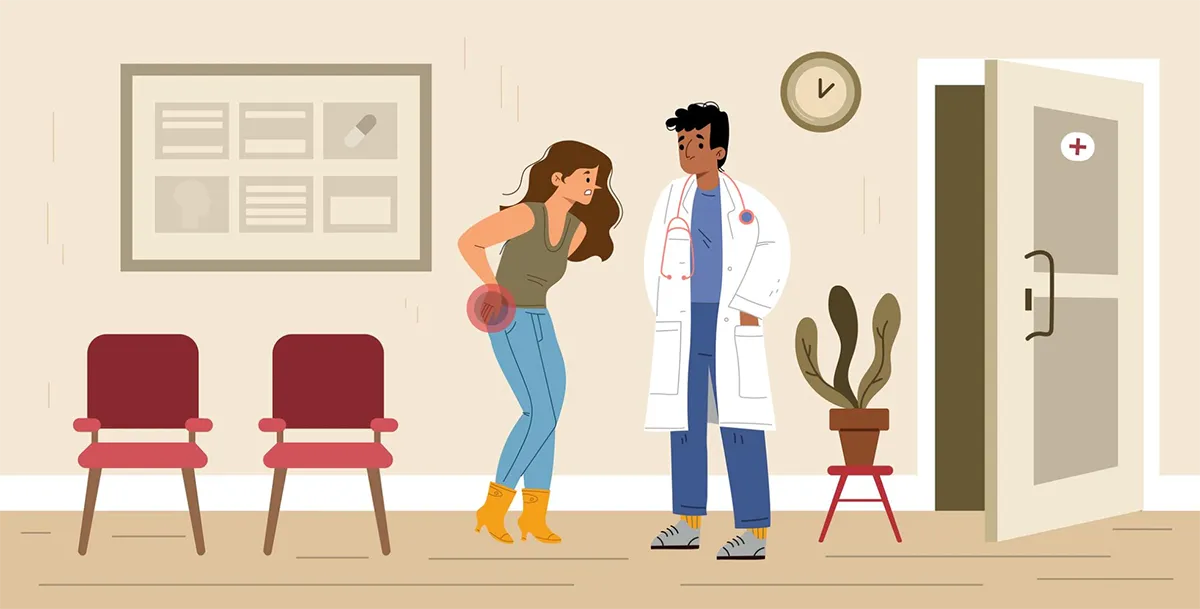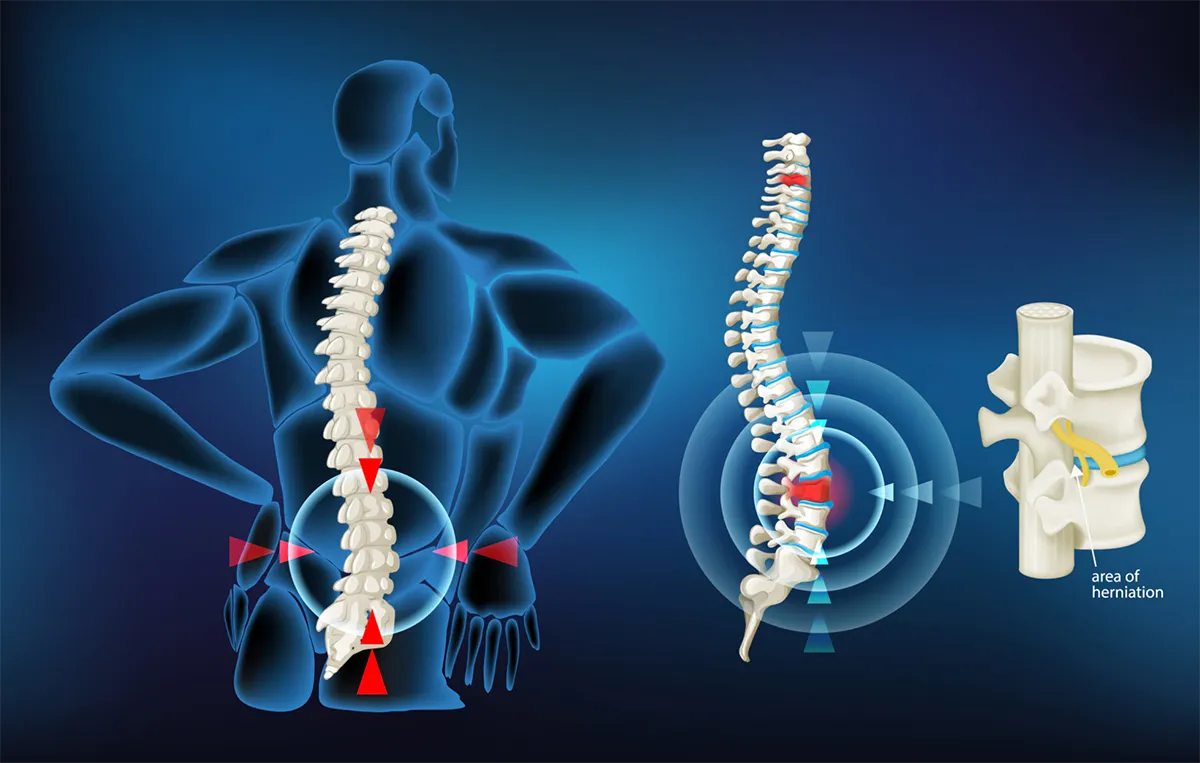Your session is about to expire
Learn More about Lower Back Pain Research Studies
What are Lower Back Pain Research Studies?
The bottom part of the back, referred to as the lower back, has five vertebrae involved in loads of heavy lifting regularly. This is where the spine connects to the pelvis, taking over the weight of the upper body. The lower back is vulnerable to stress and movement, leading to injuries and wear and tear.
Lower back research studies are needed to figure out the causes of research studies and how to prevent this pain from appearing and worsening.

Why is Lower Back Pain Being Studied in Research Studies?
More than 80 percent of adults are affected by lower back pain at some point in their lives. Based on research by the Global Burden of Disease, the main cause of disability in all age groups is lower back pain.
Lower back research studies focus on ways to prevent this pain from developing and educating the population about the causes of lower back pain. Studies show that 23 percent of adults across the globe experience chronic lower back pain.
Moreover, it is the fifth most common reason for individuals to visit physicians. Estimates also show that the likelihood of adults developing lower back pain is as high as 84 percent.
There are three subcategories of lower back pain, including acute, sub-acute, and chronic pain. These categories are based on how long each type of back pain lasts. Acute pain is when back pain lasts for less than six weeks, while sub-acute pain is when the pain lasts anywhere between 6 to 12 weeks. Lastly, chronic pain is pain that continues for 12 weeks or more.
Chronic lower back pain is the most common- close to 80 percent of health care costs go towards this condition. Estimates in the United States also show that chronic lower back pain causes physical limitations in seven million adults.
Lower back pain research studies are also being conducted to recognize which patients are most at risk for developing this condition and which medications can be taken to reduce pain and heal the back so that normal activity can be consumed.
How Does Lower Back Pain Treatment Work?
For lower back pain that does not seem to get better, surgery is the recommended option. However, here are some nonsurgical treatments currently being used to treat lower back pain:
1. Physical Therapy
Exercise is the first treatment physical therapists recommend for lower back pain. The exercises performed differ based on a patient’s conditions and symptoms.
It is mainly to retain posture and test pain tolerance and may include flexibility and stretching, core strengthening, and aerobic exercises.
2. Meditation
Lower back pain can be emotionally and physically damaging. Rehabilitation psychologists recommend mindfulness practice to deal with the emotional effects of chronic pain.
Some recommended techniques may include tai chi, yoga, meditation, and other relaxation strategies that help the mind focus on anything other than the pain.
3. Changes in Diet
Food has a vital role to play in lower back pain, as some diets can cause inflammation in the body. This is particularly true for an excessive amount of processed foods, refined sugars, and trans fat.
Losing and maintaining a healthy weight may reduce lower back pain by reducing pressure on the spine.
4. Injection Treatments
Nerve ablations, epidural steroid injections, nerve blocks, and other injection procedures are used to treat chronic lower back pain. They can only be used when doctors know the source of pain and in cases where treatment is ineffective.
Injections can heal the pain for a short time, but they are not to be thought of as long-term solutions. Moreover, they cannot be used in isolation.
5. Pharmacologic Treatments
Anti-inflammatory drugs, analgesics, muscle relaxants, and other forms of medications are used to manage lower back pain. However, the drugs available in the market have side effects and are not recommended for prolonged use.
Opioid medications can help relieve pain, but they are not meant for long-term treatment. This is because they are addictive and do not treat the underlying trigger of pain.
6. Alternate Treatments
Electric nerve stimulation, laser therapy, bio feed therapy, massage, and acupuncture are forms of nonsurgical treatments that may help with lower back pain.

What are Some of the Recent Breakthroughs Involving Lower Back Pain?
2021: Common Clinical Practice for Low Back Pain Treatment: A Modified Delphi Study - This study recognizes the lack of standardization when it comes to lower back pain and how its more research has been conducted on its management than its treatment and prevention.
Hence, a Delphi study was conducted that focused on the diagnosis and management of lower back pain. Researchers and physicians evaluated statements by experts who treat this condition in the form of a web survey. They commented on how important pain management is and what strategies can be used to prevent lower back pain and treat physical limitations.
This study found that physicians believe that multidisciplinary-multimodal approaches must be used to address lower back pain and strengthen the back. Moreover, personalized medicine is a must in patient management to help them develop a better quality of life and deal with their pain intensity.
2017: Diagnosis and Treatment of Low Back Pain - The researchers at Cochrane Library worked together to evaluate how effective complementary, conservative, and surgical methods of treating lower back pain are. They also tried to find alternate reviews on treatments for this condition.
It was found that even though acute lower back pain has a good prognosis, the pain tends to resurface within one year. Moreover, diagnostic triage is focused mainly on nerve root pain. Even though physicians use imagery to figure out what is causing lower back pain, this is ineffective as it only helps if the patient has a major condition.
Even though guidelines on managing this condition are available across the world, implementation of these methods must be worked on. Research is still ongoing to figure out which subgroups of patients are more vulnerable to lower back pain and how certain treatments can affect this condition. A number of randomized clinical trials are also being conducted to figure out how effective available treatments for lower back pain are.
2011: Barriers and Progress in the Treatment of Low Back Pain - According to this research study, it was found that lower back pain is a condition that many people suffer from repeatedly during their life. The rise in systematic reviews and clinical trials has helped patients manage this pain better and understand the available treatments.
In the study, individuals were categorized into four groups- persistent mild pain, recovering pain, severe chronic pain, and fluctuating pain. Even though $90 billion is spent yearly on health care expenses for patients with lower back pain, patients continue to report disability or recurring pain a few years later.
Even though loads of treatments are available for practitioners to choose from, the truth is that they only offer short-term relief and do not change anything for the long-term trajectories of individuals dealing with back pain. It is time to move away from traditional one-size-fits-all treatments for longer back pain.
This research study found that addressing symptoms early on in primary care makes it easier to treat and prevent this condition before it becomes chronic. It has been found that individuals with poor physical function and psychological obstacles like negative feelings and psychological stress are likely to lengthen their duration of healing.
The STarT Back tool is widely used as a subgrouping instrument that divides patients into three groups for the targeted treatment depending on the risk factors that may lead to poor results. This is an effective strategy for treatment showcasing how effective stratified healthcare can be to ensure that patients get help at the correct time.
Who are the Key Opinion Institutions on Lower Back Pain Research Studies?
Professor Nadine Foster: Nadine Foster is a researcher from Keele University’s Research Institute for Primary Care and Health Sciences who is working with other researchers to study low back pain. Evidence shows that managing the condition in primary care by educating and advising individuals on keeping active is an effective strategy.
The reality right now is different, as a large chunk of the population is taken to emergency centers and told to rest and stop going to work. They are asked to get scans or surgical treatments or given painkillers like opioids. However, research has shown that these methods are not effective in treating lower back pain.
Nadine Foster stresses how important it is to bridge the gap between evidence and practice for treating lower back pain. Funding must be redirected from ineffective treatments towards approaches that encourage function and movement. Moreover, there is a need for more research on new approaches that will allow patients to stay at work and boost their muscle function.
Lower Back Pain Research Center: The LB3P is funded by the National Institute of Health’s HEAL and helps treat the opioid epidemic in the United States. It is a member of the Back Pain Consortium, which includes thirteen research sites that collaborate to develop a systematic way of dealing with lower back pain.
The researchers involved in this study are from the orthopedic surgery, physical medicine and rehabilitation, and physical therapy departments at the University of Pittsburgh. They are working together to collect data on three types of chronic back pain, including biological, biomechanical, and behavioral. The data will then be analyzed so that patients can be characterized and treatments can be customized.
In the next few years, LB3P aims to recruit 1,000 participants so that data can be collected on different types of chronic back pains. They will be asked to complete questionnaires, participate in functional assessments, and agree to biological testing.
The center has recently started to recruit participants for a clinical trial for the treatment of lower back pain. The University of Pittsburgh plays an important part in lower back pain research, especially for the Biomarkers for Evaluating Spine Treatments (BEST) trial. Treatments such as commitment therapy, medication (Duloxetine), exercise therapy, and enhanced self-care will be taught.